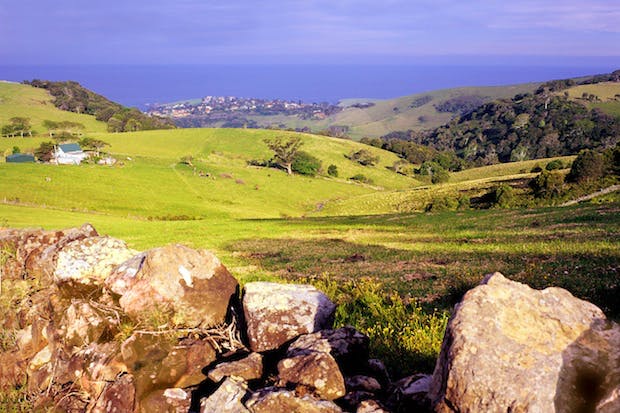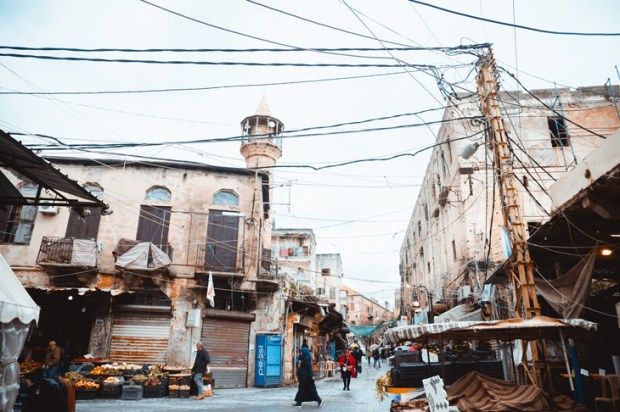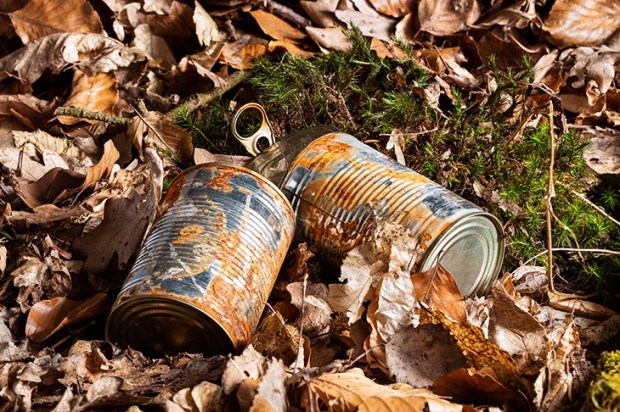Nations seek their souls in the strangest places. We English, for instance, have illustrated ourselves to the world and to ourselves with a stark choice between Cool Britannia and Ye Olde Tea Shoppe. When not hawking to tourists in London those T-shirts scrawled with obscenities, we picture ourselves in country lanes and rose-covered thatched cottages. A few of us actually seek out the vestiges of that countryside world and live a pretend-rural life there; but most Spectator readers would be bored to tears after ten minutes of Morris dancing; and a fortnight of hobnobbing over a honeysuckled garden fence with a rosy-cheeked jam-maker who had never heard of the Today programme would have us screaming for release, almost as horrified as we’d be in a Soho nightclub.
The Scots are even odder: one has only to cite tartan, Braveheart, caber-tossing and bagpipes to see at once that a year in a Highland croft would be hell for your working-class Glaswegian and your Edinburgh lawyer alike. But that is how Scotland advertises itself to the world and to itself. And don’t get me started on the Irish.
We all fly in our imaginations, it seems, to our own national equivalents of la France Profonde: to a place we suppose to be somehow interior and yet, paradoxically, on the fringe. The American love-affair with the frontier — and our British love-affair with the American love-affair with the frontier — encapsulates this.
Australia, whence I have just returned, is no exception. People I met in New South Wales and Queensland wouldn’t seriously identify with the world of ‘Waltzing Matilda’ and have probably never even seen a hat with corks hanging from it, let alone worn one. Nevertheless, if you study television and newspaper advertising — often a discerning guide to nationally favoured stereotypes — you have to conclude that the rough diamond would be their gem of choice.
Urban white Australians (and this is an overwhelmingly urban nation) really do locate something of their country’s zeitgeist in the bush. An idea of the outback and the desert is very special to them; an affection many combine with a surprising disinclination actually to go there. When, in all (naive) sincerity I asked one Sydney lady what the Gibson Desert was like, her peals of laughter spoke volumes. As if she would ever have seen the Gibson Desert! You might as well ask a respectable hostess in Lima to pluck a llama.
We British have bought into outback Australia. But not to the exclusion of another Australia that we increasingly recognise, far from the land of the jolly swagman and the billabong. We slip into clichés about the Sydney Opera House, sophisticated fusion cooking in smart urban restaurants, Bondi Beach, suncreamed swimmers and bronzed surfers on the Queensland coast. And we’re conscious of an Australia that is almost the apotheosis of suburban living: streets lined with flowering trees, charming bungalows, school buses, huge fridges, commuter freeways, obsessive lawn-mowing and an army of leaf-blowers. Hell or heaven, depending on your perspective — and I oscillate. Even in 1919 D.H. Lawrence saw, felt and described (in Kangaroo) the dawn of this über-suburban version of Australia. Readers who have seen the Australian soap Neighbours will know exactly what I mean.
So which is it? Heat and dust, or marbled city fountains? Swagman or contemporary urban poet? Thorn scrub or herbaceous border? In the chasm between these two there’s an Australia we may miss; and it is neither.
Drive south of Sydney down the Prince’s Highway, just inland from the Pacific. Within an hour you are in another world: one that lacks almost everything we think of as quintessentially Australian, yet a world that stretches down the coast for thousands of miles, and very much the world that Captain Cook saw from the sea.
It is open. It is gentle. It is green. It is cool. It is often rainy. It is in the nicest sense tame, yet — for its immensity and its total lack of visual tension — unconfined. Nothing fences, nothing threatens, nothing tangles.
Low grassy hills unfold in layer upon pastel layer, towards the horizon. There are no walls, only scattered dwellings, and a curious sense of a landscape laid tastefully out by some celestial landscape architect, to please the eye. The impression (as successive travellers have remarked) is of the most enormous ducal parkland yet a complete absence of dukes.
Patches of mist and fog cling to the copses on low slopes. Waterfowl gather around ponds and meres. Animals graze in the foreground; in the distance hills, dark green with forest. This is a landscape you could get out of your car or dismount from your horse and walk across with eyes lifted and nothing to trip you: dewy, grassy, dreamy — a desert nomad’s idea of heaven.
Drive towards the sea, where the hills descend into headlands and sheltered bays where waves tumble and hiss onto sandy beaches. Drive into the woodlands and — but for the unexpected appearance of a startled wallaby or a dragon-sized lizard motionless in the middle of the road — the impression is of a milder version of Dorset.
The sea, too, has more of Bournemouth than Mutiny on the Bounty about it: quite cold, but not very cold. Only in the night when all else is quiet, does the suppressed fury of the rollers hint at something bigger out there. By day, small seaside towns like Kiama offer you pavement cafés, bric-a-brac shops and 19th-century brick-built town halls.
It’s all very slightly old-fashioned. This Australia calls to mind a civilised version of England, an England of the middle-class imagination, with some of the raucousness, some of the rudeness, some of the seediness missing. Chaos is at bay in a world from which the pressure has escaped.
I love this Australia. Living there would be bliss. Or drive me crazy. I’m not quite sure.
Got something to add? Join the discussion and comment below.
Get 10 issues for just $10
Subscribe to The Spectator Australia today for the next 10 magazine issues, plus full online access, for just $10.















Comments
Don't miss out
Join the conversation with other Spectator Australia readers. Subscribe to leave a comment.
SUBSCRIBEAlready a subscriber? Log in